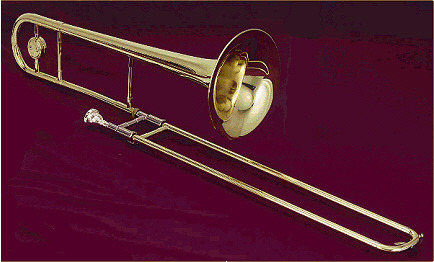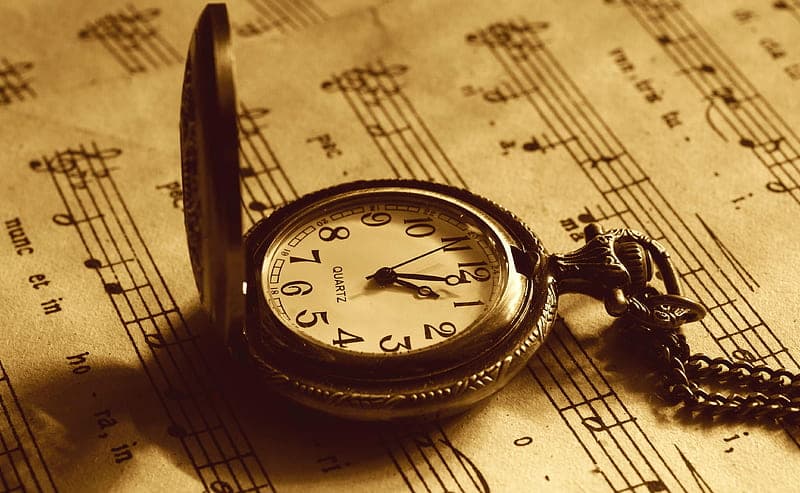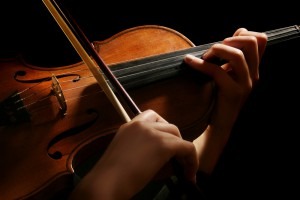
© violintutr.com
When you attend a symphony orchestra concert, the first instrument you see, on the left of the stage, are the violins. No classical music concert is complete without a violin. Violins are small string instruments that are played with a bow. The instrument is held in the left hand and the bow in the right hand. The fingers of the left hand press down the strings so that when the bow is moved across the string, a pitch is sounded. This is a very simple way of describing a very complex system to produce sound. As the classical orchestra developed, the violin was always central to its music and ideas.
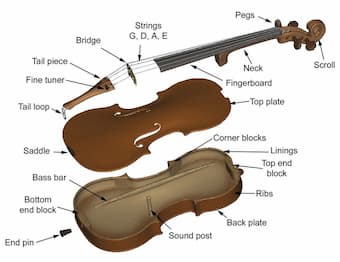
Parts of a violin
© www.researchgate.net
A violin, in a sense, is an oblong box. It is made of wood and is highly resonant. The strings are attached on the short side of the box and the vibrations of the string resonate in the box and are amplified. The strings are attached to the box proper at the bridge, a piece of fine carved wood that connects the strings to the box. Inside the box, under the bridge, another piece of wood connects the front and back of the box, again to spread the vibrations.
With the following schematic, we can now get all the proper names in order. The top and bottom of our box are the Top and Back Plates – the side of the box is called the Ribs. The strings run along the Neck and are attached at one end at the Tuning Pegs and at the bottom by the Tailpiece. In the middle, they run over the Bridge. Under the bridge is the Soundpost.
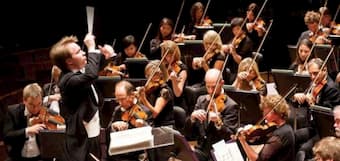
Violin section of an orchestra
© The Violin Channel
You will note that the violin has a waist – the box does not have straight sides. This is to allow the bow to be applied at different angles to the strings. Without the waist, the strings would be difficult to play.
When we think of the violins used in the classical concert orchestra, we think of a standard-sized violin. The body length is around 14 inches (358 mm) and the total length is 23.25 inches (591 mm). But, if you’re a child, you can’t use a full-size violin – you need to start on a smaller one. The smallest violin shown here is a mere 8 inches (206 mm) long in the body, with a total length of 13.5 inches (340 mm), intended for a child under the age of 5.
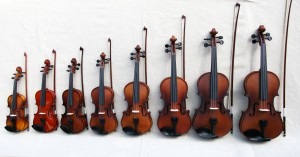
Violins from 1/16th size to regular
The design of the violin has been set from at least the 17th century. Some violin makers, such as those in Cremona in the 18th century, set the standard for violins. The Stradivarius, Guarneri, and other family makers in Cremona set the sound and the style that we still use today. There are fierce arguments about what, exactly, the Cremona makers did to give the instruments the sound that’s worth millions: was it the varnish, did they tune the wood before they made the instruments, and so on. It doesn’t matter in the long run, the classical violin and its place in classical music leads the rest.
The violin takes its place on stage best as a concerto instrument, i.e., soloist versus the orchestra. Gramophone magazine lists these as the top 10 violin concertos:
1. Mozart: Violin Concerto No. 3
Mozart: Violin Concerto No. 3 in G Major, K. 216 (Isaac Stern, violin/cond.; Columbia Chamber Orchestra)
2. Beethoven: Violin Concerto
Beethoven: Violin Concerto in D Major, Op. 61 (Lola Bobesco, violin; Stuttgart Radio Symphony Orchestra; Hans Müller-Kray, cond.)
3. Mendelssohn: Violin Concerto
Mendelssohn: Violin Concerto in E Minor, Op. 64, MWV O14 (Tianwa Yang, violin; Sinfonia Finlandia Jyväskylä; Patrick Gallois, cond.)
Brahms: Violin Concerto in D Major, Op. 77 (Zino Francescatti, violin; Vienna Philharmonic Orchestra; Dimitri Mitropoulos, cond.)
5. Tchaikovsky: Violin Concerto
Tchaikovsky: Violin Concerto in D Major, Op. 35 (Mariko Honda, violin; Slovak Radio Symphony Orchestra; Keith Clark, cond.)
6. Bruch: Violin Concerto No. 1
Bruch: Violin Concerto No. 1 in G Minor, Op. 26 (Hansheinz Schneeberger, violin; Stuttgart Radio Symphony Orchestra; Carl Schuricht, cond.)
Berg: Violin Concerto (Rebecca Hirsch, violin; Netherlands Radio Symphony Orchestra; Eri Klas, cond.)
8. Bartók: Violin Concerto No. 2
Bartók: Violin Concerto No. 2, Sz 112 (Gyorgy Pauk, violin; Polish National Radio Symphony Orchestra; Antoni Wit, cond.)
9. Prokofiev: Violin Concerto No. 2
Prokofiev: Violin Concerto No. 2 in G Minor, Op. 63 (Itzhak Perlman, violin; Boston Symphony Orchestra; Erich Leinsdorf, cond.)
10. Shostakovich: Violin Concerto No. 1
Shostakovich: Violin Concerto No. 1 in A Minor, Op. 77 (David Oistrakh, violin; Leningrad Philharmonic Orchestra; Evgeny Mravinsky, cond.)
Today’s top violinists include the following, arranged in order of birth:
Ivry Gitlis (b.1922)
Ida Haendel (b.1928-2020)
Itzhak Perlman (b.1945)
Gidon Kremer (b.1947)
Giuliano Carmignola (b.1951)
Viktoria Mullova (b.1959)
Joshua Bell (b.1967)
Leonidas Kavakos (b.1967)
Gil Shaham (b.1971)
Isabelle Faust (b.1972)
Daniel Hope (b.1973)
James Ehnes (b.1976)
Patricia Kopatchinskaja (b.1977)
Janine Jansen (b.1978)
Hilary Hahn (b.1979)
Lisa Batiashvili (b.1979)
Julia Fischer (b.1983)
The violin can have a sound that’s as soft as a breeze or as hard and striking as an angry animal. No matter what the composer writes, it’s up to the performer to bring their prowess and intellect to bear in producing one of the most beloved instrumental sounds. For the violin in classical music, its position is central.




